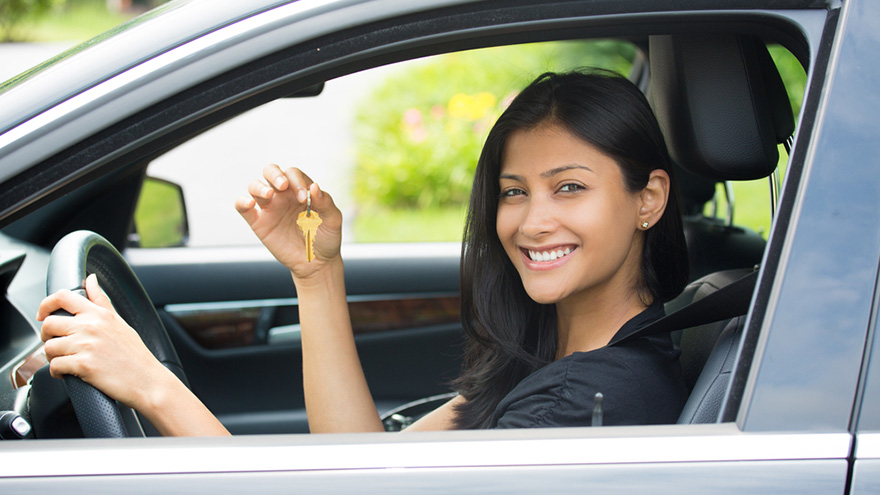Whether for school or work, Cars.com surveys reinforce importance of personal vehicle

Especially for dealerships in larger metropolitan areas where public transit is more prevalent, a new Cars.com study reinforced how valuable vehicles are to consumers nowadays — particularly ones who have made a purchase since the coronavirus pandemic began.
Based on the individuals who participated in the Cars.com survey conducted earlier this month, 21% of respondents said they have purchased a car in the last six months, with 57% saying it was due to the pandemic.
And a separate study conducted by Cars.com also highlighted how valuable personal transportation is to parents who have children still attending school in in-person settings.
While 39% of parents say they will send their kids back for an in-person education in the fall, Cars.com indicated 53% are opting for virtual learning. But for those returning to the classroom, school buses and public transit will take a backseat as many parents opt to drive themselves, according to Cars.com.
Perhaps summarizing the upbeat trends that could be beneficial to dealerships, Cars.com assistant managing editor Matt Schmitz said in a news release, “Personal vehicles will dominate … as distrust in public transport and ride-sharing continues.”
Taking a deeper look at the consumer survey connected with employment, new data revealed changes to Americans’ everyday work commute as many plan (or plan not) to head back to the office in the weeks and months to come.
While Cars.com found more than a third of Americans are currently working from home, the site said consumers still are putting greater reliance on their personal vehicle for other life activities.
The site discovered 66% of workers are saving valuable time on their commutes, leaving subway cars, bus seats and train platforms largely empty as they continue to ditch the office.
“As much of the American office workforce continues to work remotely, there is a major shift in commuting behavior, which is likely to have a lasting impact long after we return to the office,” Schmitz said.
“Workers are saving up to an hour or more a day by not commuting, and finding significant value in this newfound gift of time. And when they do finally return to the office, it won’t be via mass transit,” he continued about that Cars.com’s survey orchestrated Aug. 13-14 that included 3,062 respondents.
Also according to that Cars.com study, the work commute has changed, possibly forever, based on findings such as:
43% of Americans lack faith in fellow passengers to abide by health and safety protocols, while 57% at least moderately trust other passengers.
30% of those who are currently working at an office at least part-time are commuting less often.
35% of future commuters plan to commute less, even after returning to work in person.
Cars.com also mentioned that 62% of workers have swapped public transportation for their own vehicle, leading to these other trends uncovered in the survey:
— 65% of bus riders have stopped riding or are riding less frequently.
— 60% of subway or commuter rail riders have stopped riding or are riding less frequently.
— 59% are using ride-sharing less often than before.
— 49% believe it will be at least three months before travel on mass transit returns to pre-COVID levels. An additional 7% state they will never resume their pre-COVID mass transit levels.
By working outside of the office, Cars.com found 66% of Americans are saving 30 minutes or more per day on their commute. The site added 40% of commuters are saving up to one hour per day, while 26% of commuters are saving more than one hour per day.
Cars.com also mentioned the “newfound gift of time” is allowing Americans to relax, connect and invest in themselves as these findings revealed:
— 43% of would-be commuters are watching more TV and movies with their extra time.
— 38% are spending more time exercising.
— 33% are spending their spare time with family and friends.
— 19% are using the extra time to work more.
More details about school-transportation survey
Separately, Cars.com shared new data revealing parents’ decisions on safe back-to-school transportation this year.
Of those kids returning for in-person learning, it won’t be on the school bus, according to these trends Cars.com found:
— 55% of parents plan to use their vehicle to take their children to school, and parents planning to carpool with other families is up 22% from pre-pandemic.
— 30% of parents will have their kids take the school bus, a 31% drop compared to pre-pandemic.
— 3% of parents will have their kids take public transit, a 25% decrease from before the pandemic.
— 73% of parents are planning for longer drop-off lines this year as more people drive.
“As parents and local officials make the decision on how the school year will look, it’s clear that back-to-school routines will change. We found that the majority of parents will opt for their family vehicle as the primary mode of back-to-school transport, nearly double the number of parents sending their kids on the bus. Interestingly, we’re seeing a significant increase in the number of families planning to carpool with friends or neighbors, which may mean parents feel it’s still a safer alternative to the school bus,” Cars.com editor in chief Jenni Newman said in a news release.
“It’s not entirely surprising to see that parents want to drive their kids themselves. Americans have used their cars as a safe, reliable escape throughout the pandemic, and the value in personal car ownership will only increase as we continue to feel the impact of this crisis into the second half of the year,” Newman continued.
For those planning to carpool, Cars.com found that cleanliness is a top priority, mention these survey findings:
— 79% will require masks for all passengers in their vehicle.
— 68% will sanitize their vehicle regularly.
— 50% will travel with fewer people in the vehicle.
“For families planning to return to school, recent CDC guidelines on ridesharing recommend that every child in the carpool, as well as the driver, wear cloth face coverings for the entire ride and high-touch surfaces be frequently sanitized,” Newman said. “Parents should try to safely distance passengers as much as possible while in the car, and consider rolling down the windows to increase airflow.”
With more time spent in the vehicle, Cars.com has found that for 68% of consumers the pandemic has sped up their purchase timeline for a new or upgraded vehicle.
Furthermore, the number of people searching online for features such as moonroofs and sunroofs to allow for more airflow has increased since before the pandemic, according to the site.
Cars.com recommended the following top five family-friendly vehicles for the upcoming school year that allow for more distancing within the vehicle.
—Subaru Outback: Cars.com noted that the Outback has a loyal following for adventure-seeking families due to its quiet, spacious interior, excellent visibility and affordable pricing. With comfortable seats in the front and back for a family of five, this popular wagon has plenty of legroom and a backseat that sits slightly raised, providing stadium-style seating to help passengers see out the front windshield.
—Chrysler Pacifica: Cars.com said the Pacifica is popular among minivan fans because of its roomy interior, optional captain’s chairs or bench seating in select models, and quiet, comfortable ride. Seating seven to eight people, ample legroom and storage make it a perfect fit for busy families. The rear-seat Uconnect Theater system and optional panoramic moonroof offer all riders an escape.
—Volkswagen Atlas: Cars.com’s 2020 Family Car of the Year boasts a spacious interior and a comfortable, quiet ride. A roomy third row provides enough space even for adults to enjoy the ride, while the bench-style second row easily allows three child seats to fit across. A moonroof option is available.
—Hyundai Palisade: Cars.com’s Best of 2020 carries seven to eight people comfortably depending on its roomy second- and third-row seating configuration. The luxury-grade interior provides riders with a relaxing, quiet ride, and large side windows and an optional moonroof are great for a lively game of I Spy or car bingo.
—Ford Expedition: Large outside and in, Cars.com highlighted the Expedition is one of the few full-size SUVs that provides the spacious interior suggested by its exterior bulk, with the “hands-down roomiest” third row even if you don’t opt for the extended Expedition Max. With a maximum seating capacity of eight, it easily accommodates your kids and other carpoolers with plenty of room.


